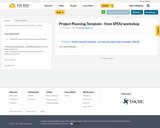
This planning template came from an SPDU workshop.
- Subject:
- Education
- Elementary Education
- Material Type:
- Diagram/Illustration
- Date Added:
- 09/09/2019

This planning template came from an SPDU workshop.
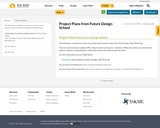
The following is a collection of resources & project plans teachers made at the Future Design School Workshop.
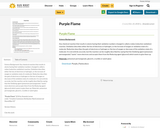
Science Background:
Any chemical reaction that results in atoms having their oxidation numbers changed is called a redox (reduction-oxidation) reaction. Oxidation describes either the loss of electrons or hydrogen, or the increase of oxygen or oxidation state of a molecule. Reduction describes the gain of electrons or hydrogen or the loss of oxygen or decrease of the oxidation state of a molecule. It is not entirely accurate, but the reaction can be roughly described by saying that the Oxidizing agent (potassium permanganate) “wants” more electrons and accepts them from the Reducing agent (glycerol) which wants to give them up.
Materials: potassium permanganate, glycerin, crucible or watch glass

Great information to help clarify the difference between PBL and regular projects.
Visuals are included with a clear explanation as well as a short quiz to check for understanding.

This resource examines:
*Setting the stage for inquiry
*150 Years' relationship
*Research
*Resources

Seven Essentials for Project-Based Learning
John Larmer and John R. Mergendoller
Some "projects" border on busywork. Others involve meaningful inquiry that engages students' minds.
This article outlines the seven essential inclusions to make PBL a success for you and your students.

This design challenge from Chris Woods will have your students tapping into their creativity and a wealth of skills including Math to build a better shoe!

This is a cross curricular project revolving around the documentary The Social Dilemma. Students will write an essay and create an Action Plan to tackle the issues surrounding Social Media and it's pervasiveness in our lives. The outcomes covered are focused in Social 7, Health 7 and ELA 7.

Feed The World BBQ Cook-Off
In this case, students will investigate heat, temperature, specific heat capacity and latent heat. UNICEF has approached your class to construct a solar oven using inexpensive and common materials. The students will investigate the principles of heat, temperature, specific heat capacity and latent heat while constructing an actual solar oven, testing it on water and presenting their design to the folks from UNICEF in a BBQ send off for their kick-off campaign for your oven.

Bring PBL to Your Classroom
Project-based learning is a big part of today?s modern learning
environments. It takes students on a cool journey of creativity,
exploration, and true real-world relevance. What does PBL look
like in action in your classroom?
Solution Fluency provides the building blocks for PBL. It?s a
way for students to learn good problem-solving skills and to
become successful with any challenge.
This PBL Ideas Book will help them do exactly that. Inside are
classroom project ideas for years K?12. There are 9 awesome
projects to choose from with choices for primary, middle, and
senior grades. But wait?what if the scenario idea you like isn?t for
your specific grade?
No problem at all. These PBL ideas are customizable and
scalable for any grade level. They?re also cross-curricular in
nature, and can be adapted to other subject areas.
Explore these scenarios and think creatively about how you
can bring them to life for your students

Objective: Your goal is to create a maze for the Sphero in which you code it to go through a variety of obstacles and requirements!
Learn Distance, rate and time. This could be done with any robot.
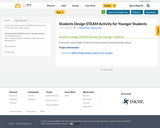
In this project students design a STEAM activity that could then be done with younger students.

As we prepare for the fall 2020 re-entry to school, in thinking about specifically supporting learning, we have developed the “Sun West Return to Learn Process”. This process reminds us of the best practices we already implement in our schools, continues to reinforce our PeBL philosophy and will help us work together to achieve “Success for ALL learners”.This resource includes curated lists of on demand professional learning opportunities & resources connected to each of the 5 elements included in the Sun West Return to Learn 2020 Process.
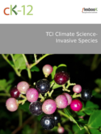
The Climate Initiative (TCI) created a fun, interactive Flexbook for high school students on invasive species and how it relates to climate science. Learn about invasive species, read case studies, understand data sets, look for invasive species in your area, start community conversations, and plan your own action project!

Enter as a teacher, student, learner, or parent.
Thorough digital literacy curriculum offers mix-and-match options to fit any classroom.
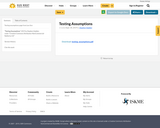
Testing assumptions page from Lee-Ann
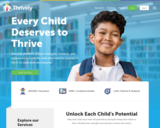
Thrively is a website that helps kids find online and local activities that fit their particular interests. Thrively was created with input from pediatric neuropsychologists, and the site bursts with teacher-contributed lesson plans and ideas. Once a teacher sets up a class, kids take an assessment that identifies 23 potential strengths. The site then suggests activities tailored to kids' interests and strengths; Thrively says it has more than 100,000 on file and has recently created new content related to projects, videos, journaling, and career pathway maps. Kids can click on a "Done It" button when they've completed an activity, and progress can be viewed using site dashboards. Users can also share activity boards with other members of their social circle.
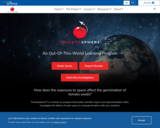
Canadian Kindergarten through Grade 12 Educators – Investigate the effects of outer space on seed germination with your class. Tomatosphere™ is a hands-on program that builds scientific inquiry and experimentation skills.
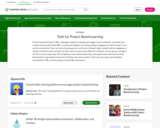
Project-based learning, or PBL, challenges students to design and engage in more authentic, extended, and complex learning. But while PBL is a trusted strategy for increasing student engagement and learning, it's not easy to orchestrate. There are tons of moving pieces, and if you're doing it right, students will be engaging in a variety of interest-driven projects all with various needs and on different schedules. So how do you manage it all? Tech can be a huge help. This list gathers some useful productivity and organization tools that can help both teachers and students keep track of, finish, and assess projects. There are also a few tools designed specifically for PBL, as well as plug-and-play PBL experiences.
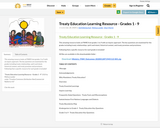
This amazing resource looks at FNME from grades 1 to 9 with an inquiry approach. The key questions are examined for the grades including treaty relationships, spirit and intent, historical context, and treaty promises and provisions.
Following that a specific resource for each grade is included!